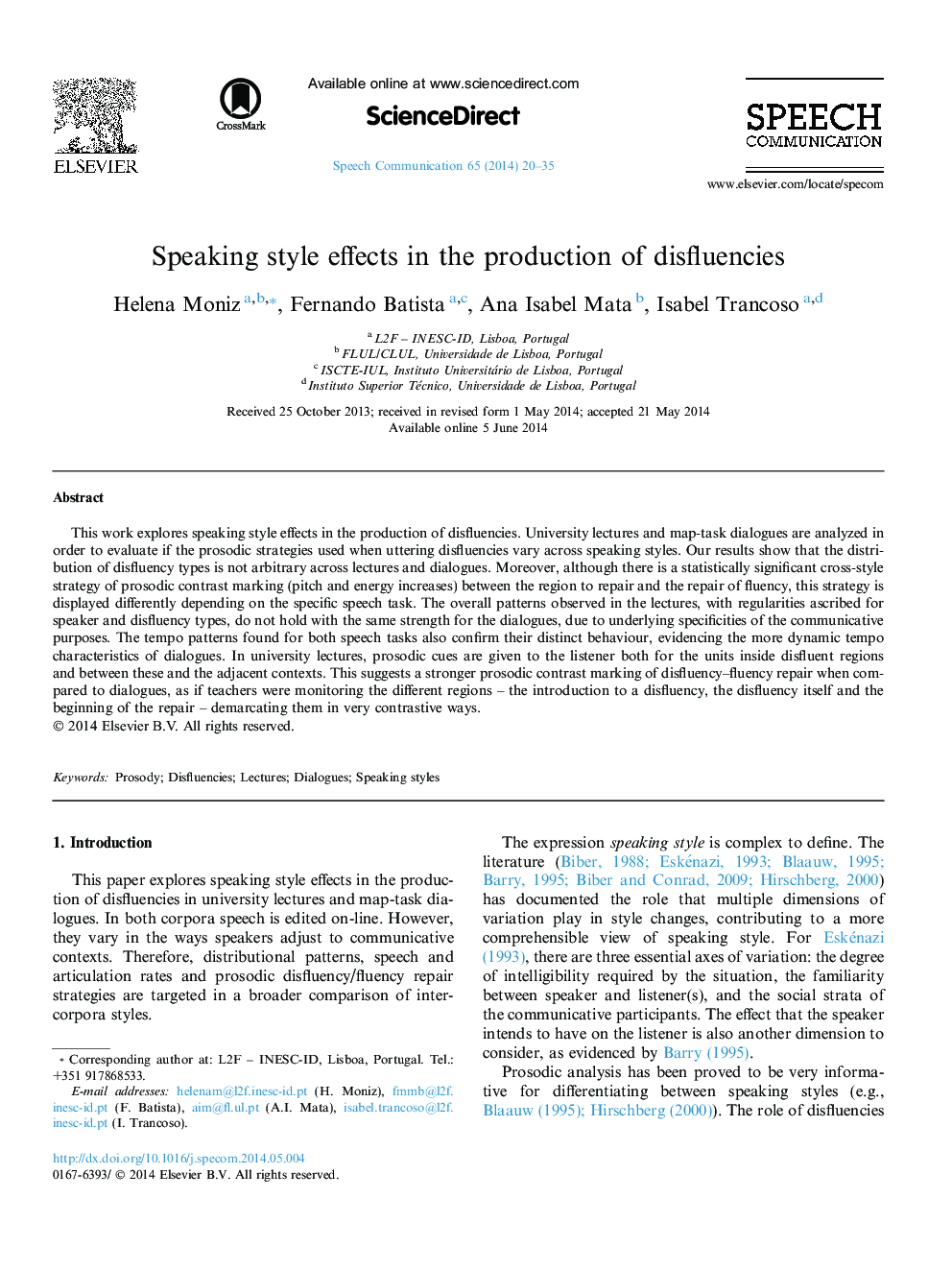| Article ID | Journal | Published Year | Pages | File Type |
|---|---|---|---|---|
| 565285 | Speech Communication | 2014 | 16 Pages |
•Analysis of stylistic properties in the production of disfluencies in two corpora.•First study on stylistic variation in the production of disfluencies for Portuguese.•Basis for studying the impact of speaking styles in automatic disfluency detection.•Evidences on distributional patterns of disfluencies being corpus dependent.•Significant differences in the degrees of prosodic contrast marking in both corpora.
This work explores speaking style effects in the production of disfluencies. University lectures and map-task dialogues are analyzed in order to evaluate if the prosodic strategies used when uttering disfluencies vary across speaking styles. Our results show that the distribution of disfluency types is not arbitrary across lectures and dialogues. Moreover, although there is a statistically significant cross-style strategy of prosodic contrast marking (pitch and energy increases) between the region to repair and the repair of fluency, this strategy is displayed differently depending on the specific speech task. The overall patterns observed in the lectures, with regularities ascribed for speaker and disfluency types, do not hold with the same strength for the dialogues, due to underlying specificities of the communicative purposes. The tempo patterns found for both speech tasks also confirm their distinct behaviour, evidencing the more dynamic tempo characteristics of dialogues. In university lectures, prosodic cues are given to the listener both for the units inside disfluent regions and between these and the adjacent contexts. This suggests a stronger prosodic contrast marking of disfluency–fluency repair when compared to dialogues, as if teachers were monitoring the different regions – the introduction to a disfluency, the disfluency itself and the beginning of the repair – demarcating them in very contrastive ways.
